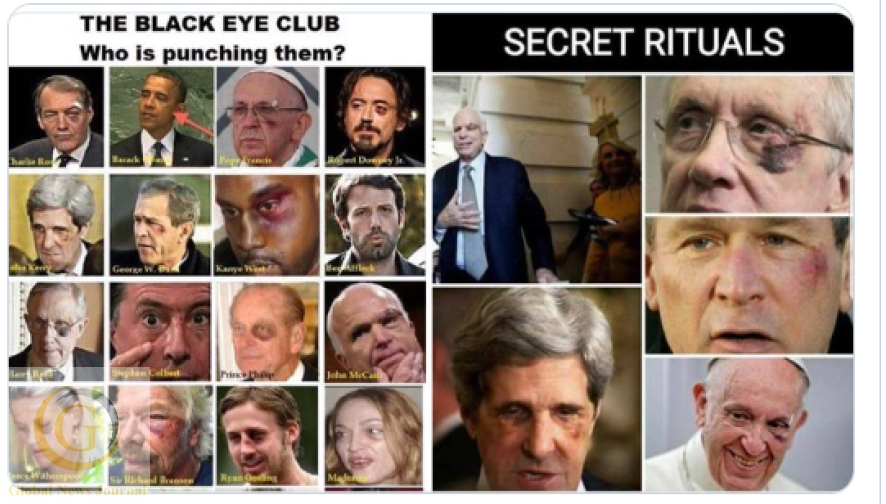Is America Under Siege? Kamala Harris and Ron Paul’s Shocking Claims Raise Alarming Questions VIDEO
Ready to uncover the truth? Sick of the lies? Join our Telegram Channel now. It’s time for the real story! My gratitude to all my readers!
Kamala Harris accuses Trump of planning to use the military against Americans, while Ron Paul warns of a new Department of Defense directive allowing lethal force on U.S. citizens. With the 2024 election looming, concerns about government overreach and civil unrest grow. Learn about Directive 5240.01 and the potential consequences for American democracy.
As the U.S. approaches a crucial election season, the political landscape has become charged with tension. Vice President Kamala Harris made a bold and dramatic statement, accusing former President Donald Trump of plotting to “turn the American military against the American people.” In the midst of this escalating rhetoric, former Texas Congressman Ron Paul issued his own stark warning about a little-known U.S. Department of Defense directive—5240.01—that grants the military the authority to use lethal force against American citizens at the request of local law enforcement during emergencies.
This explosive combination of allegations, timing, and political circumstances could not have come at a more critical moment. But what does this really mean for America? Are we on the brink of martial law, civil unrest, or worse? These claims are more than just political barbs; they represent the heart of growing fears about how far the government will go in times of crisis.
Kamala Harris’ Allegation: Fact or Fear-Mongering?
Kamala Harris’s assertion that Donald Trump intends to use the military to quash civilian dissent may seem extreme. But in the context of a nation that has seen the rise of militarized police forces, the use of federal troops to control protests, and the increasing polarization of the population, it has struck a chord with many. Harris’s statement echoes the fears of those who believe that Trump, who had shown little hesitancy in calling for “law and order” during his presidency, could take more authoritarian steps if given the chance.
This claim is not baseless when viewed through the lens of Trump’s past actions. During his presidency, Trump deployed federal officers to cities experiencing civil unrest, like Portland, Oregon, under the justification of protecting federal property. For many, this evoked concerns that a more draconian approach could be on the horizon.
But what is Harris’s claim grounded in? There is no clear evidence that Trump has outrightly stated plans to deploy the military against American civilians in the future. Yet, her statement taps into growing anxieties about the direction the country is heading. It plays on the fears of those who see authoritarianism creeping closer to home. The question that Harris seems to ask, without directly stating it, is whether the American people trust Trump to exercise restraint in moments of crisis.
Ron Paul’s Dire Warning: The Dangers of Directive 5240.01
While Kamala Harris’s claims might be speculative, Ron Paul’s concerns come with a frighteningly real piece of documentation. The former congressman raised the alarm over Directive 5240.01, a little-known Department of Defense directive that permits military intelligence components to use lethal force against U.S. citizens if local or state authorities deem it necessary during emergencies.
What exactly is Directive 5240.01? Issued with little fanfare, this directive outlines the conditions under which military intelligence could be authorized to operate domestically in matters of public safety. What’s particularly alarming is the provision allowing these military components to engage in lethal force under civilian command—essentially empowering the military to act as an extension of local law enforcement.
To fully understand the implications of Directive 5240.01, it’s important to realize that the United States military is, by design, prohibited from engaging in domestic law enforcement under the Posse Comitatus Act. This law has been a pillar of American democracy, ensuring that the military does not overstep its bounds in civilian life. However, in times of emergency or national crisis, certain exceptions can be made, and the lines can blur.
But why now? Why would this directive come to light just a month before an election that is already primed to be contentious and potentially chaotic? The timing seems suspect, and Ron Paul, ever the libertarian, does not take such directives lightly. He has long been a critic of government overreach, and this latest move only deepens his concerns about the erosion of civil liberties in America.
A Nation Poised for Unrest: The Election’s Role in Tensions
What makes these developments all the more alarming is their timing. With the 2024 U.S. election just around the corner, fears of political violence and unrest are already at an all-time high. Many experts anticipate widespread protests, demonstrations, and potentially even violent confrontations, particularly in battleground states where the results could swing the outcome of the election.
Harris’s claim and Paul’s warning both touch on a broader sense of unease about how prepared the government is to handle the potential fallout from this election. With conspiracy theories swirling about election rigging, voter suppression, and a lack of trust in the political process, the notion of a militarized response to civilian unrest doesn’t seem as far-fetched as it might have a few years ago.
The memories of the 2020 election are still fresh in the minds of many Americans. The chaos that ensued, with legal challenges, protests, and even an insurrection at the Capitol, has left the country on edge. Should the upcoming election face similar—or even more severe—challenges, the potential for violence could escalate, raising serious concerns about the balance between maintaining order and preserving constitutional rights.
How Far Is Too Far? The Fine Line Between Security and Tyranny
Directive 5240.01, in combination with Kamala Harris’s statements, brings to light the crucial question of where the line between national security and government overreach is drawn. The role of the military in civilian life has been a topic of intense debate throughout American history. From the internment of Japanese Americans during World War II to the deployment of the National Guard during civil rights protests, the use of military force on U.S. soil has always been controversial.
The key issue here is not whether the government has the right to protect its citizens in times of unrest, but how far it is willing to go in doing so. At what point does the use of military power cross the line from protecting citizens to suppressing them? This is the fine line that Ron Paul warns about.
By granting local law enforcement the ability to call on military intelligence for lethal force, Directive 5240.01 raises significant constitutional questions. Will this power be used judiciously, or could it become a tool for silencing dissent? These are the questions that Americans must grapple with as they head into a contentious election season.
The Erosion of Civil Liberties: An Alarming Trend
Ron Paul’s warning fits into a larger pattern of concern among civil libertarians and constitutionalists who believe that the U.S. government has steadily been eroding civil liberties in the name of security. Since the attacks of September 11, 2001, the American government has expanded its surveillance powers, increased its use of military technology in policing, and blurred the lines between federal and local authority.
The Patriot Act, the militarization of police forces, the use of drones for domestic surveillance—each of these measures has been justified as necessary for protecting the American people from threats, both foreign and domestic. But with each new measure, the scope of government power has expanded, often at the expense of individual rights and freedoms.
Directive 5240.01 can be seen as the latest step in this trend. By giving the military a more direct role in civilian law enforcement, it marks a significant departure from the principles of Posse Comitatus and the long-standing tradition of keeping military and police powers separate.
The Dangers of Government Overreach: Lessons from History
History has shown that governments, when given unchecked power, often abuse it. From the suspension of habeas corpus during the Civil War to the internment camps of World War II, the U.S. government has not been immune to overstepping its constitutional bounds during times of crisis. The question now is whether America is heading down a similar path.
Ron Paul has long warned about the dangers of unchecked government power. His libertarian philosophy is rooted in the belief that government, while necessary, should always be viewed with a healthy dose of skepticism. For Paul, Directive 5240.01 is just one more example of how the government can use a crisis to justify the expansion of its authority.
Kamala Harris’s claim, though more focused on Trump, ties into this same fear of government overreach. Whether or not Trump has plans to deploy the military against American citizens, Harris’s statement reflects a broader concern that the government—no matter who is in charge—could misuse its powers in the face of civil unrest.
The Role of Media and Public Perception
In today’s media-saturated environment, how these issues are portrayed can have a significant impact on public perception. Harris’s claim, coupled with Paul’s warning, has the potential to stoke fear and distrust among the electorate. The mainstream media has already amplified these concerns, with some outlets focusing on the potential for violence and unrest in the wake of the election.
This media narrative can be a double-edged sword. On one hand, it helps raise awareness about the dangers of government overreach. On the other hand, it can also contribute to the very chaos it warns about. As Americans head into the election, the media’s portrayal of these issues will play a critical role in shaping public opinion—and potentially the outcome of the election itself.
Conclusion: A Nation at a Crossroads
As the U.S. faces one of the most contentious election seasons in its history, the stakes have never been higher. Kamala Harris’s claim about Trump and Ron Paul’s warning about Directive 5240.01 are just the latest developments in a larger battle over the future of American democracy.
At the heart of these concerns is the fear that the government, whether under Trump or another leader, may resort to authoritarian measures to maintain control in times of crisis. As Americans prepare to vote, they must ask themselves how much power they are willing to give the government in exchange for security—and what price they are willing to pay for freedom.
Our mission to champion democracy, freedom of speech, and patriotic values relies on the support of dedicated individuals like you. Your contribution is vital in helping us provide insightful analysis, uncover pressing issues, and inspire positive change in our nation.
Join us in our commitment to making a difference. Every donation counts and empowers us to continue our work in advocating for the values we hold dear.
Thank you for being a crucial part of our journey.

I’m a 33-year-old writer and the founder of World Reports Today. Driven by the timeless principles of democracy and freedom of speech, I use my platform and my writing to amplify the voices of those who uphold these ideals and to spark meaningful conversations about the issues that truly matter.






